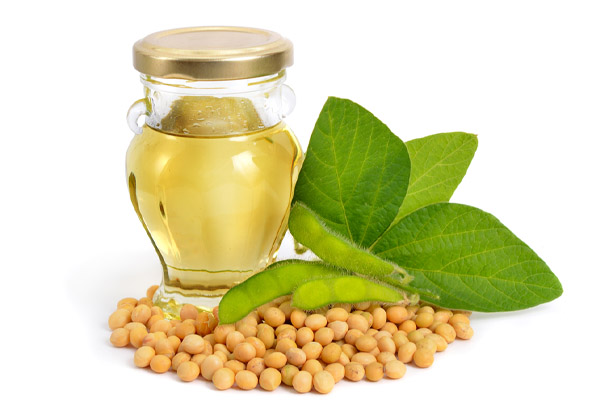Explaining Bio-Diesel: Alternative Fuel Facts & Data
 The US Department of Energy states that bio diesel is one of the few energy sources that utilize recycled cooking oils, plant oils, and animal fats as an alternative fuel. This source of fuel eliminates the need for diesel fuel derived from petroleum. Moreover, other types of energy usage lead to a spike in emissions.
The US Department of Energy states that bio diesel is one of the few energy sources that utilize recycled cooking oils, plant oils, and animal fats as an alternative fuel. This source of fuel eliminates the need for diesel fuel derived from petroleum. Moreover, other types of energy usage lead to a spike in emissions.
The Energy Information Administration (EIA) used to keep an eye on biodiesel fuel production every month. According to their findings, soybean oil is the biggest B100 source (100% biodiesel). The United States generates biodiesel blends every month. These blends are made of pure biodiesel and petroleum diesel fuel.
Biodiesel is a crucial fuel source as it will help the world become sustainable and efficient while providing energy security in the future.
What Is Biodiesel Fuel?
Table of Contents
Local governments and businesses are focusing on producing biodiesel fuel as a renewable energy source to help enhance renewable energy production and reduce climate change. Many scientists think that the world is undergoing a climate crisis, so experts focus their efforts on generating eco-friendly solutions, such as solar energy, biomass fuels, geothermal energy, hydroelectric power, wind turbines, and biodiesel.
This fuel source offers many advantages. It can help reduce the total global warming greenhouse gas emissions. It is utilized to provide energy for most diesel equipment, and only minor alterations are usually needed to use this fuel source. It can be used with the latest diesel engine technology, and it is fitting for sensitive conditions because it is non-toxic and biodegradable.
The best part of this is it is a renewable energy source. This is not like fossil fuels that will run out over time. It also removes the need for diesel fuels derived from petroleum. The use of recycled resources and agriculture eliminates emissions and helps protect and preserve the environment.
What Is Biodiesel Made Of?

This fuel is produced using many different materials. Biodiesel fuel is made by scientists using the transesterification process.
What is surprising is that it is easier to generate fuel than people think. The main materials used are known as biofuel crops, including waste vegetable oil, cooking oil, and soybean oil. The production process can also use animal fats and other crops.
Waste oils are specifically effective as they become a renewable type of diesel fuel instead of leftover waste. Keep in mind that recycled restaurant food greases aren’t used for other purposes. It makes perfect sense to use these waste oils for biomass creation for biodiesel fuel delivery. Plus it is helpful to the environment.
Petroleum Diesel Fuel Vs. Biodiesel Fuel
It is not surprising that petroleum diesel fuel and biodiesel fuel are vastly different. Biodiesel is the better choice over petroleum and other fossil fuels as its biggest goal is to reduce carbon emissions.
Biodiesel contains higher oxygen levels. They have a 10% to 12% higher oxygen level than petroleum diesel, which is crucial because it helps lower pollution emissions. Unfortunately, it also lessens the power of diesel engines by around 4%. However, it is a fair trade-off to ensure the environment remains healthy while minimizing the need for carbon-based fuels like heating oil and crude oil.
Biodiesel contains little sulfur, and this is why it is needed as a fuel source, as it helps limit how much pollution is generated from diesel-powered engines. Biodiesel is more slippery compared to petroleum diesel as well. This is a feature trucking companies want as it reduces the wear and tears on the engines.
This fuel source as a renewable fuel has potentially negative features during the process of biodiesel production. The fuel has a chance of gelling up when there are low temperatures, much more than petroleum diesel does. Some biofuels are more likely culprits than others.
Still, biodiesel tends to oxidize and become a gel-like mass. This is a concern for owners who use engines that are only operated occasionally, such as a power generator. Therefore, biodiesel fuels are kept in semi-sealed light-tight storages that are stored in a cool, dry place to get the best results.
What Are Biodiesel Blends?

Biodiesel can be mixed in many various concentrations. Common biodiesel mixtures are B5 and B20, which contains 5% biodiesel and 6% to 20% biodiesel, respectively.
Low sulfur heating oil, or LSHO, is a popular choice for home heating. There is also the ultra-low sulfur heating oil (ULSHO) which is an even purer option. These fuel sources are clean and energy-efficient, meaning they do wonders for carbon emission reduction. Moreover, these fuels are so clean that homeowners hardly need heating system cleaning after they start burning this fuel on a regular basis.
B100 and other high-level biodiesel mixtures are used less commonly at this point. However, they are ultimately consumed as liquid renewable diesel fuel for vehicles. These higher blends typically require equipment modifications to prevent issues when operating diesel engines.
How Do Biofuels Help Reduce Carbon Emissions?
Biofuels can minimize harmful emissions in many different ways. The EIA states that these fuels are carbon-neutral because the plants used to create them draw in the carbon dioxide. This counterbalances the CO2 emissions from petroleum-derived diesel fuels and less pure biofuels.
Converting biomass feedstocks into biofuels is highly eco-friendly. These fuels power diesel engines of furnaces for home heating, transportation, and more. Materials like bioethanol can be used instead of gasoline, which can minimize the carbon dioxide in the environment.
They are also totally compatible with the natural carbon cycle. Developing new biomass fuels removes unwanted atmospheric CO2, which is another huge advantage even if it was not initially an unintended consequence. It is still a positive outcome, nonetheless.
How Users Of Oil-Heat Can Do Their Part To Minimize Greenhouse Gas Emissions With The Use Of Biodiesel Blends
Oil heat consumers are positioned uniquely. They can do their part in greenhouse gas emission reduction right away. They just need to convert their fuel delivery from regular home heating oil to biodiesel blends that minimize carbon emissions and help keep climate change at bay.
Currently, it is best to utilize lower biodiesel blends, such as B5 and B20. B100 has a higher viscosity and is less effective with your fuel system parts, but lower biodiesel blends have a lower viscosity.
This means they run more effectively with your home’s heating unit. Moreover, these biofuel blends let you reduce hazardous emissions by as much as 20%.
This is an excellent condition for homeowners as they can take the needed path to protect the Earth from harm. It is also an excellent chance for the environment due to the less greenhouse gas emissions so the Earth can thrive for many more years.
Conclusion
The world has realized that it is time to take steps against hazardous greenhouse emissions. We have the technology and means to produce affordable, clean, eco-friendly biofuels, including biodiesel. These fuels were specially developed to fuel cars, heat homes, and create electricity to be renewable and long-term.
Biofuels can totally remove greenhouse gasses as time passes when the transesterification process becomes perfect. The future is very bright for the environment and plant-derived biofuels. They are undoubtedly leading the way towards a better and brighter carbon-free world. Help us make the world a better place when you switch to biofuels to meet our import and home heating needs.
Bioheat® Heating Oil Is The Industry’s Solution To Help Minimize Emissions Today
 The Paris Agreement is an international treaty signed by 196 countries. It is a legally binding agreement to achieve net-zero emissions by 2050. This will significantly enhance the renewable fuel standard.
The Paris Agreement is an international treaty signed by 196 countries. It is a legally binding agreement to achieve net-zero emissions by 2050. This will significantly enhance the renewable fuel standard.
Homeowners and businesses can receive these benefits immediately when they switch to EcoBlend Bioheat® Heating Oil, a premium heating oil. EcoBlend Bioheat® Heating Oil utilizes renewable fuels such as the B20 blend to reduce carbon emissions. Using this fuel helps the US reduce carbon emissions and achieve net-zero emissions by the 2050 deadline.
Call Hart Home Comfort right away to know more about EcoBlend Bioheat® Heating Oil and start lowering your home’s carbon emission output right away!
For any questions about what Hart Home Comfort can do for you, give us a call today. Click here to contact us now or call us at (631) 667-3200 to find out more!